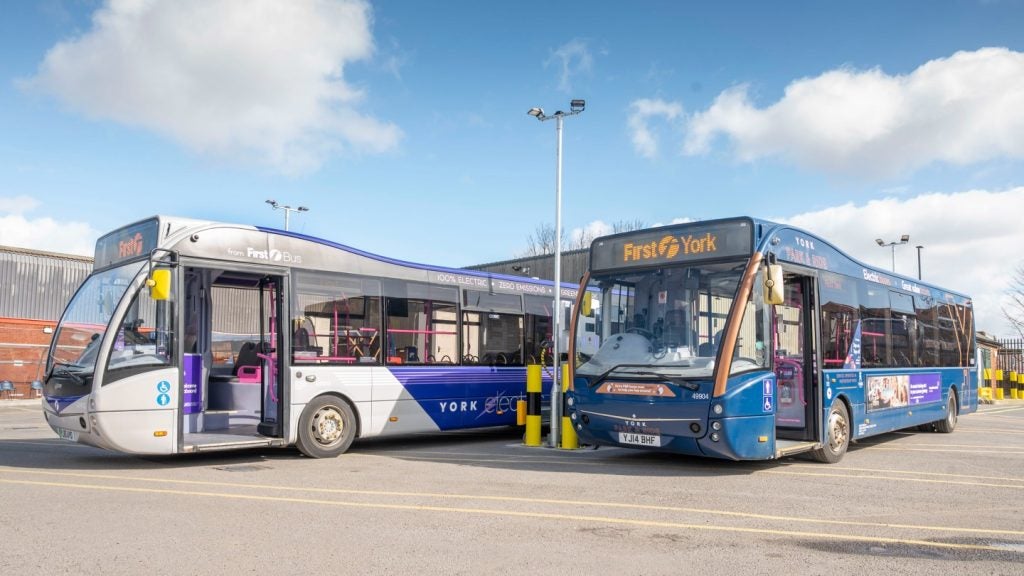
In 2014 Paragon Car Finance re-entered the market after a six-year hiatus. Following this anniversary, Jonathan Minter caught up with Julian Rance, head of finance at the company, to talk about how the first year has gone and what the company has planned for the future.
How has year one gone?
We’re pleased with the way the first year has gone. Our principal objective was building distribution, which is always important for a new business that’s launch¬ing. We feel we’ve done that well, and we’ve been successful within the broker market and with smaller dealers, which are the two markets we’re aiming for.
The market has changed since our first stint in it. To outline those changes: there’s a lot more technology in it than when we were in it the first time, and dealers are much more comfortable with using technology to forward applications to lenders. And whereas before it was very much about phone and fax, now we’ve got XML links and online application systems, which we launched with.
The other big change is there are more online dealerships. What I mean by that is there are a lot more customers going direct to sites who then source the vehicle either through that site, or go and get it themselves. This is a totally new development that’s arisen since we were in the market the first time round.
Were you expecting these two changes, and have you had to adapt to cope with them?
How well do you really know your competitors?
Access the most comprehensive Company Profiles on the market, powered by GlobalData. Save hours of research. Gain competitive edge.

Thank you!
Your download email will arrive shortly
Not ready to buy yet? Download a free sample
We are confident about the unique quality of our Company Profiles. However, we want you to make the most beneficial decision for your business, so we offer a free sample that you can download by submitting the below form
By GlobalDataXML links we were – we had these the first time round. We were aware of all this, hence we have a very slick and easy-to-use online system that we launched with.
The online dealership side of things is quite different, in as much as it’s not something we weren’t aware of. We just weren’t aware of the opportunity that exists there.
So we’ve developed relationships with those companies as well. It’s almost anoth¬er part of the market we’ve had to look to transact business with.
Is there anything you’d have done differently if you were to go back to a year ago?
In terms of what we launched with, one surprise for us has been the impact of direct access to the underwriting team. This is quite unique in the marketplace. Often if the answer’s no, then the answer’s no, but for us it’s a case of we get nothing if we don’t write business, and neither does the dealer.
From my perspective if someone is making a decision which is an important decision, then they should be able to stand by that and say why we’re not doing the deal. I think this breeds trust and confidence from your distribution base as well.
If we look back 12 months, I think the regulatory situation that surrounds the market is still a bit slow-moving. When we looked at it a year ago we thought the transition would be quicker, but there’s still a lack of clarity and still some confusion in the market in terms of how that’s going to map out.
You’ve got the FCA, who have been helpful and supportive in terms of the way the market has moved, but they’ve intimated that they are planning to look at remuneration payments in June, when they have another consultation paper, and also the affordability question.
So what that’s done is delay lenders in terms of what actions they will take in relation to those two subjects. It you’re a lender with a large extant book and legacy systems, you don’t want to be making a big change until you’ve got the next chapter on the FCA’s thinking on those aspects of the market.
This makes it difficult for dealers and brokers because if you’ve got different stances being taken by different lenders, that makes it difficult to manage their business.
At the moment we’ve got some lenders looking at going down the APR route for quoting for new business. That’s not wrong, that’s fine. But if you look at it from a dealer or broker perspective, if you’ve got one lender going down an APR route and saying they are going to pay rates based on APR, that by definition means the documentation fees are going to go.
On the other hand you may have a lender who sticks with the documentation fees. So you then have a dealer or broker who has to develop two different systems to deal with two different lenders. And there are different nuances where you could have three or four different scenarios. I’m not saying the market needs to have one method only, but the sooner we get to a situation where we know where the market is, that will be so much better for the lenders, the dealers and the brokers.
It will be useful to have greater clarity in the market. That will come. It’s just been a bit slower than we thought it was going to be when we launched a year ago.
That said, I’ve been to various conferences and the FCA have been supportive of the industry. They see the industry as being a good industry, and one that has good competition. From their perspective it was very h ard when t h e y assumed responsibilities from the OFT. What they’ve done to date has been balanced and measured.
Not from the FCA, but there was some scaremongering when the FCA first came to fruition, but it’s not been the case. In the general scheme of things, I think it’s been managed particularly well.
When you guys came in, you were an early part of a wave of entrants coming into the market. Did you expect the quantity of new entrants, and do you think the wave might be coming to an end?
I would say the entrants’ numbers have been fairly large but I don’t think the appetite and the segments of the market the entrants operate in are all the same. So we’ve come back to the prime market, because that’s the market we were previously in. But I think a lot of the new entrants are looking at the near prime and subprime market. So there’s a differentiation there.
Do I think there are going to be more? I think maybe; that’s a difficult one to call. One of the difficulties of coming back to a market is you don’t really know how the market is going to look in six to 12 months’ time. The challenge for us has been to forecast what the market is going to look like. It changes month on month.
I think there’s going to be a change in the market because there are going to be a number of dealers who won’t go through the authorisation process, so they’ll come out of the finance side. If you’re a dealer who takes the decision, you still want to be able to sell cars to customers. How are you going to be able to do that within the regulatory framework. There’s an opportunity there for somebody to fill that space.
Were there any challenges you faced in terms of being a returning entrant?
Being a pedigree worked quite well for us. We had a good name previously, and that helped us in terms of building the brand this time round.
One of the areas we looked at which was difficult was we’ve not developed a PCP product, and I’m not sure we’re going to. We may consider that though.
Where we are with that is that we felt we needed to come back to the market and we couldn’t be the all things to all men. You can’t be when you are launching a new business. You need to pick the key areas.
PCP is a good product – it’s good for dealers and customers. We’re looking at a marketplace where we’ve had three years of year-on-year increases in new car plates. And we’re up to a position where we’ve had the fourth-largest new car registrations ever in 2014.
There’s only so much you can have when you’re an island nation in terms of people buying new cars. You can only buy so many new cars.
The issue that can cause, and where we are with this, is that we think new car registrations will increase for the first six months of this year. But then I think we’ll see a plateauing off of registrations going forward.
The big concern for me is what happens to the used car values. Some people are saying that they will hold up okay. I’m probably in the other camp. I think you will see a lot of used cars coming through the system, good quality cars. There’s been a dearth in the marketplace for those types of vehicles. I work on the basis that, as supply increases, demand may not match it as much, and therefore prices will need to adjust to reflect the demand there is for those cars.
If you’re looking at a PCP project, and you’re looking to put future values on a PCP two-to-three years hence, it’s difficult to foresee where car prices are going to be. If you’re looking to compete with car manufacturers, in terms of their PCP products where they have a retail outlet, that also makes things quite difficult.
So PCP is a good product but where we are, and I think where we’ll look further, is that a personal leasing product will make more sense.
So we’re thinking about PCP, but personally I view personal leasing as a much better option. If you’re a lender, you only get back those PCPs which are below water, because the customer tends to keep the ones making a profit. So what tends to happen is the lender gives a lower guaranteed future value because you don’t want to be exposed to that risk so much.
But if you’ve got a personal leasing product then you can afford to be more buoyant on your residual value pricing, because you get the good ones come back to you, as well as the bad ones.
So you get a much better mix in terms of the vehicles. Therefore you can afford to be a lot more positive in terms of where you set your residual values.
This is better for the customer because then the product is going to be more competitive in terms of monthly payments.
The population think of generation rent today. Why would you look to own a depreciating asset, and that’s where PCP and leasing come from. That’s why you’ve got a bit more of an uptake.
Any success you want to highlight?
We’ve been particularly pleased with the response on the distribution front. We’re dealing with about 75% of the top brokers in the UK. They are demanding, and the broker network is key in the UK market. They service a lot of dealers, so that gives us access to a lot of dealers as well. That’s a good test of our product.
We’re pleased by how we’ve been received. There was a lot of support when we came back to the market; people have demonstrated that support by giving us business. We’ve found that we’ve gone back and developed relationships or rebuilt relationships we had before, and they feel similar to where they were before. Which is a nice thing.
We’re pleased with where we are, we’ve still got a lot of work to do and we’re still learning. The regulatory piece is still key for us. That’s going to be quite high on our priority list.
I think if we were to have this conversation in 12 months’ time, we’d be looking at a rate versus risk product. I think that is going to be key to the way the market is developing at the moment. We’re still on the traditional method where you’ve got one rate, but I think the way things are going, we’re going to move to a rate versus risk environment very soon. I’m talking about the market, not just us.
We will also be looking at e-signatures this year. That’s something that’s long overdue in the marketplace and is starting to develop right now.
Are you talking about Paragon or the general industry?
I foresee the market going down that route, so we need to be planning ahead for that eventual shift that may come. So if we need to look at a rate versus risk product, if we think that’s going to happen, to cover our bases.







